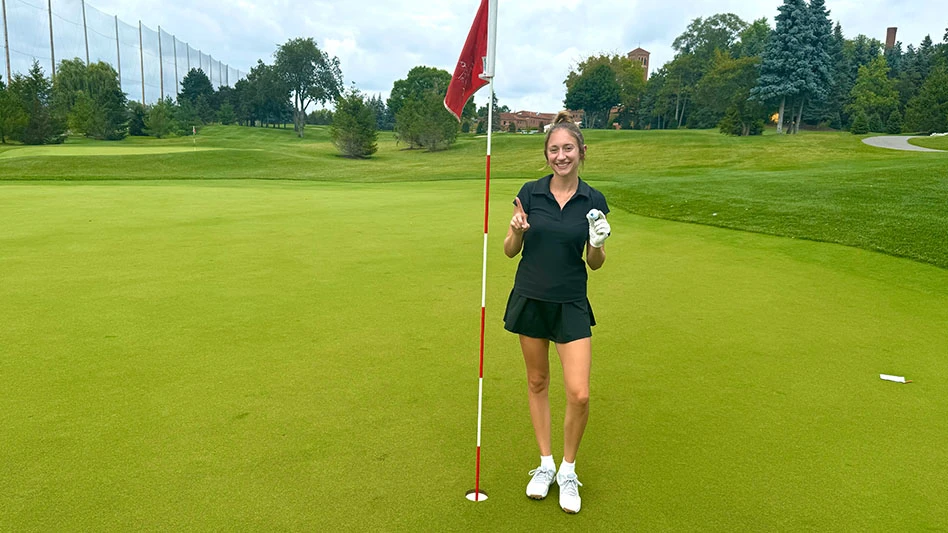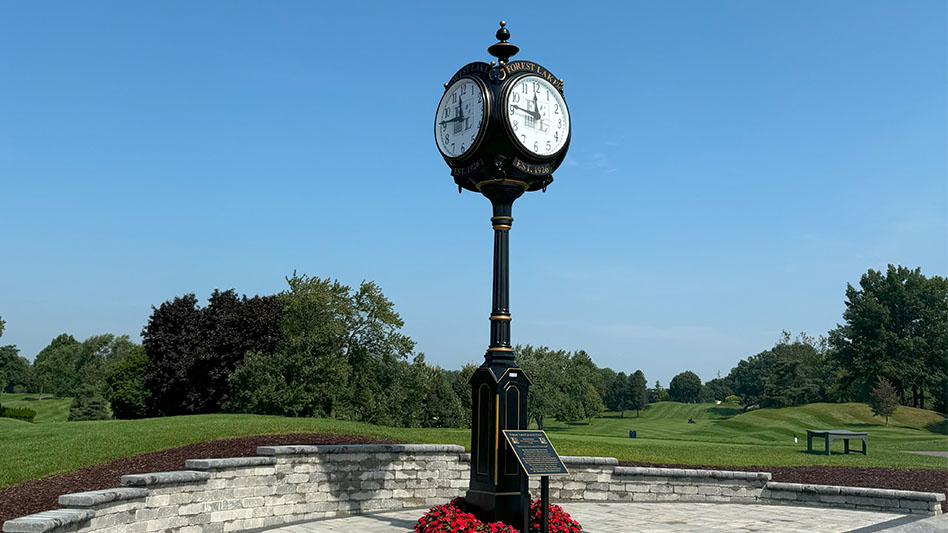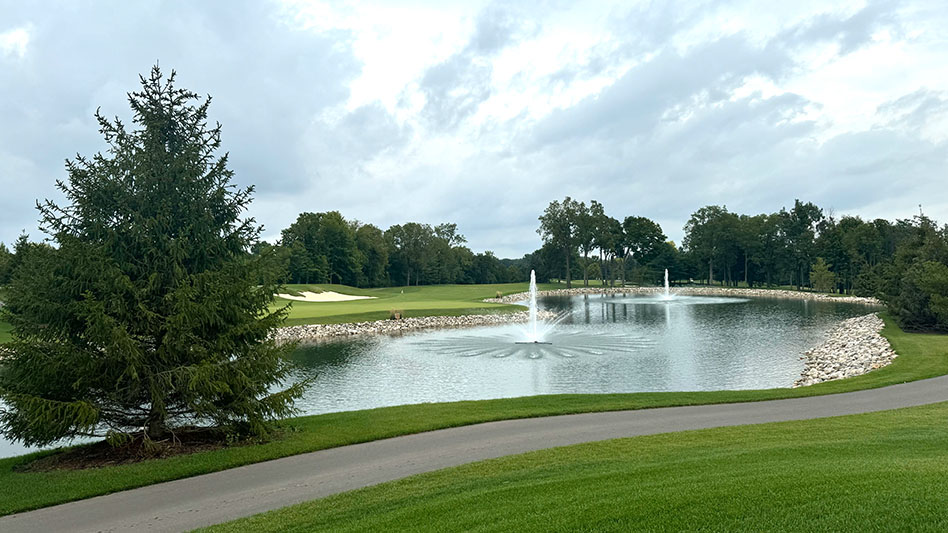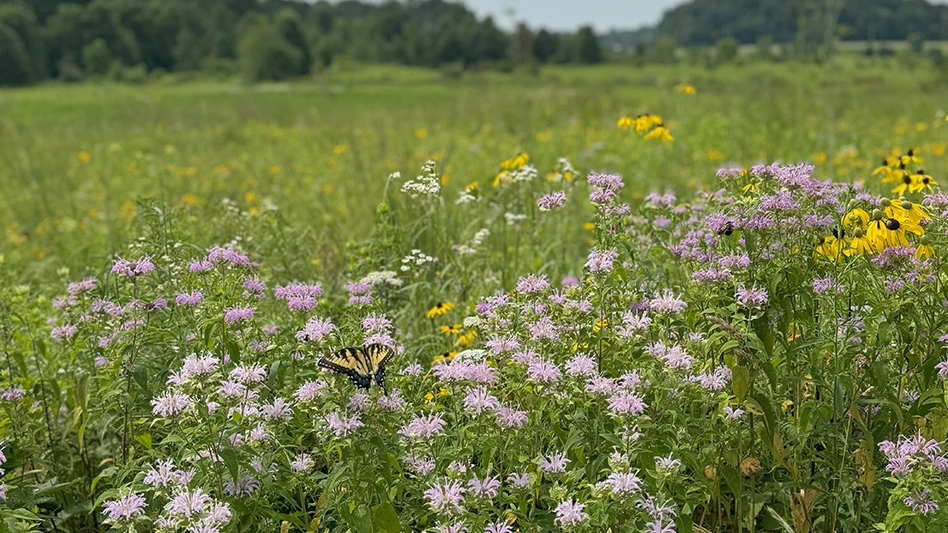
Kelsie Horner (4)
When my alarm went off at 5 a.m. on Tuesday, Aug. 27, I had no idea what was to come in the days ahead of my first work trip as Golf Course Industry’s assistant editor. As I write to you now, here are just a few of the many things I learned:
Your course’s entrance is important
Our first visit was to Forest Lake Country Club in Bloomfield Township, Michigan. Superintendent Ryan Moore showed us their newly renovated course, where we viewed the results of the “Top of the Hill” project. The entrance features an expanded practice range and putting green, new clock, concrete staging area, modern starter’s hut and more. I was overtaken by the beauty of the course, and learned just how important your property’s first few steps can be.
Keeping a solid relationship with your members will go a long way
A few of Forest Lake’s members came together to fund a new clock placed between the putting green, practice range, first tee, sixth green, seventh tee and 18th green at the “Top of the Hill.” The clock added character to the course, and immediately caught my eye. If it weren’t for Moore’s relationship with the members, this feature may not have been added.

The new clock at Forest Lake Country Club.
There’s much more thought behind tree placement than I expected
For our second course visit, we had the honor of touring Oakland Hills Country Club. Known as “The Monster” and the host of 17 major championships, the course holds significant history in the golf world. The famed clubhouse burned down in February 2022, and the club’s current renovation, “Next 100 Project,” includes a new replica clubhouse, new maintenance building and a full-course restoration. Oakland Hills has two 18-hole courses: the South and North Courses. The South course includes minimal trees following a Gil Hanse-guided restoration, leaving a wide landscape view. The North Course features more trees throughout the layout, leaving a more parkland feel. Director of agronomy Phil Cuffare explained the thought process behind the tree decisions, and there’s much more to it than I would have ever expected.
The restored Oakland Hills Country Club South Course.
Pack flashlights and extra portable chargers
This may not be golf related, but it’s a lesson everyone can learn. As soon as we checked into our hotel room Tuesday night, a storm rolled in and the hotel’s power went out. They had no backup generators, so I had to survive without electricity. I did NOT bring a flashlight, and my portable charger was not fully charged. When I woke up to my phone at 7 percent battery and had to do my makeup in the dark, you could say I learned my lesson.
Green placements are much thought out
When we visited Pine Lake Country Club in West Bloomfield Township, director of agronomy Terry Poley toured us around their recently renovated course. A new feature includes the connection of greens into tees. Poley explained how the connections allow easy access to the next hole, encourage community among golfers and promote shot options around putting surfaces.
Proper course care and design can make you feel like you’re in a new world
When we stepped onto The Cardinal at Saint John’s Resort in Plymouth, Michigan, you would not have guessed that you were in the metro Detroit area. The course’s beauty preserved by superintendent Kevin Peck’s team made it feel like I was in the middle of somewhere more remote. 
The Cardinal at Saint John's Resort.
Anything is possible on the golf course
Before heading home, our publisher + editor-in-chief Guy Cipriano and I decided to play the Little Cardinal, a new Ray Hearn-designed, seven-hole par-3 course at Saint John’s Resort. I have only been seriously playing golf for about three months and have come to learn why people both love and hate the game. I have not been able to consistently hit my irons well, so when I found out I wouldn’t need my driver on this course, I expected my golf game to not be at its best.
When we teed off on the third hole, I decided to stick with my 8 iron. The yardage measured 86 yards to the center of the green, but the pin was in the back left. I lined up to the pin, despite Guy’s suggestion to aim a little right … and swung. As the ball flew, I admired how perfect it looked. In the air, it headed straight to the pin. We heard a loud noise, and the two of us sighed at what we thought was the sound of the ball hitting a tree behind the green. As we approached the pin, Guy immediately walked past the hole to begin searching for the ball. But I had a slight feeling to check the hole.
Sure enough, that loud noise was not the ball hitting a tree, but the ball hitting the flagstick. Ace!
Out on the golf course, anything is possible.
Kelsie Horner is Golf Course Industry’s assistant editor.
Latest from Golf Course Industry
- Graze, Invited partner for autonomous mowing launch at Gleneagles CC
- New grasses up north?
- From the publisher’s pen: Technology diffusion and turf
- Applications open for 2025 Syngenta Business Institute
- Smart Greens Episode 1: Welcome to the digital agronomy era
- PBI-Gordon promotes Jeff Marvin
- USGA investing $1 million into Western Pennsylvania public golf
- KemperSports taps new strategy EVP





